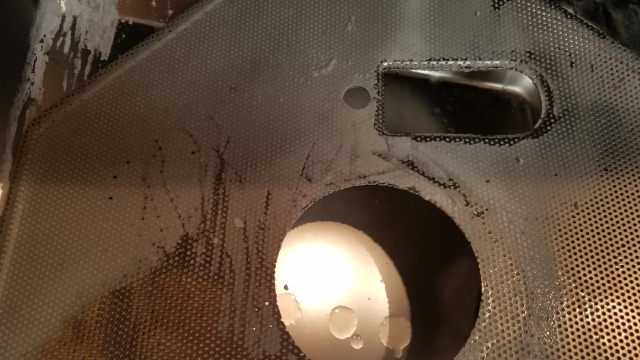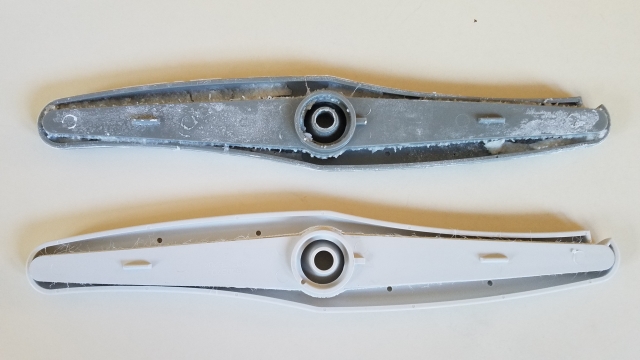Our water in Montgomery County, Ohio is about 120 ppm of particulates, which is considered moderately hard. This means that the ‘clean’ water that enters our home suds up with soap in a reasonable fashion, but calcium compounds form on our plumbing faucets over a couple of years time.
The wife alerted me that our relatively new GE dishwasher (less than 4 years old) was not doing an acceptable job cleaning the dishes and silverware. Based on an inspection of the washer internals, I discovered layers of lime and calcium deposits (see first photo below). Most all of the filters and spray arms were completely blocked with the hard water deposits that interfered with the water flow (see second photo below of the coarse filter).
Rather than buying an entirely new dishwasher, or attempting to clean all of the components (in some cases, the calcium was trapped inside the spray arms), I went to an appliance parts website and ordered a set of replacement filters and spray arms. The third photo below compares the original upper spray arm to the replacement arm that I purchased.
All in all, it took about 2 hours to thoroughly clean the dishwasher internals and replace all of the component parts. The wife is happy now that the calcium deposits are not being sprayed all over the dishes, and the water circulates properly to completely melt the detergents pods.



If I were you, I would install a water softener – we have one and would not go back to hard water!